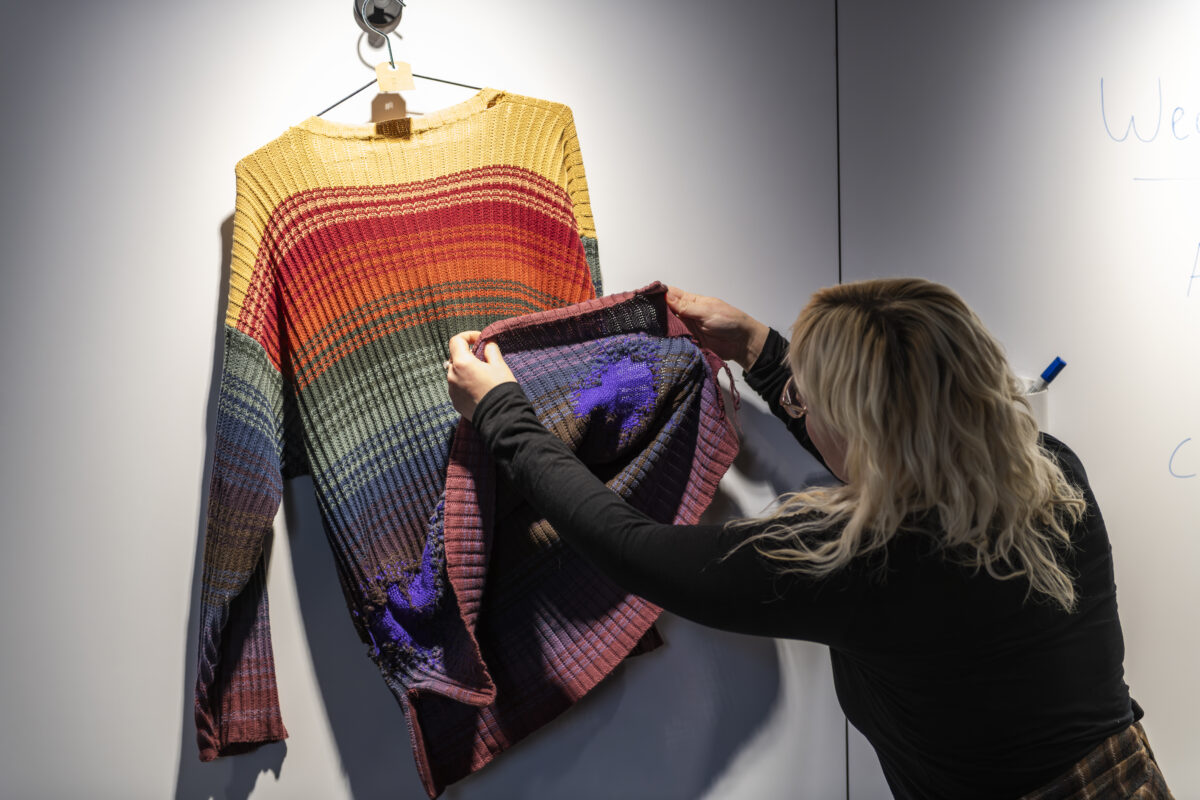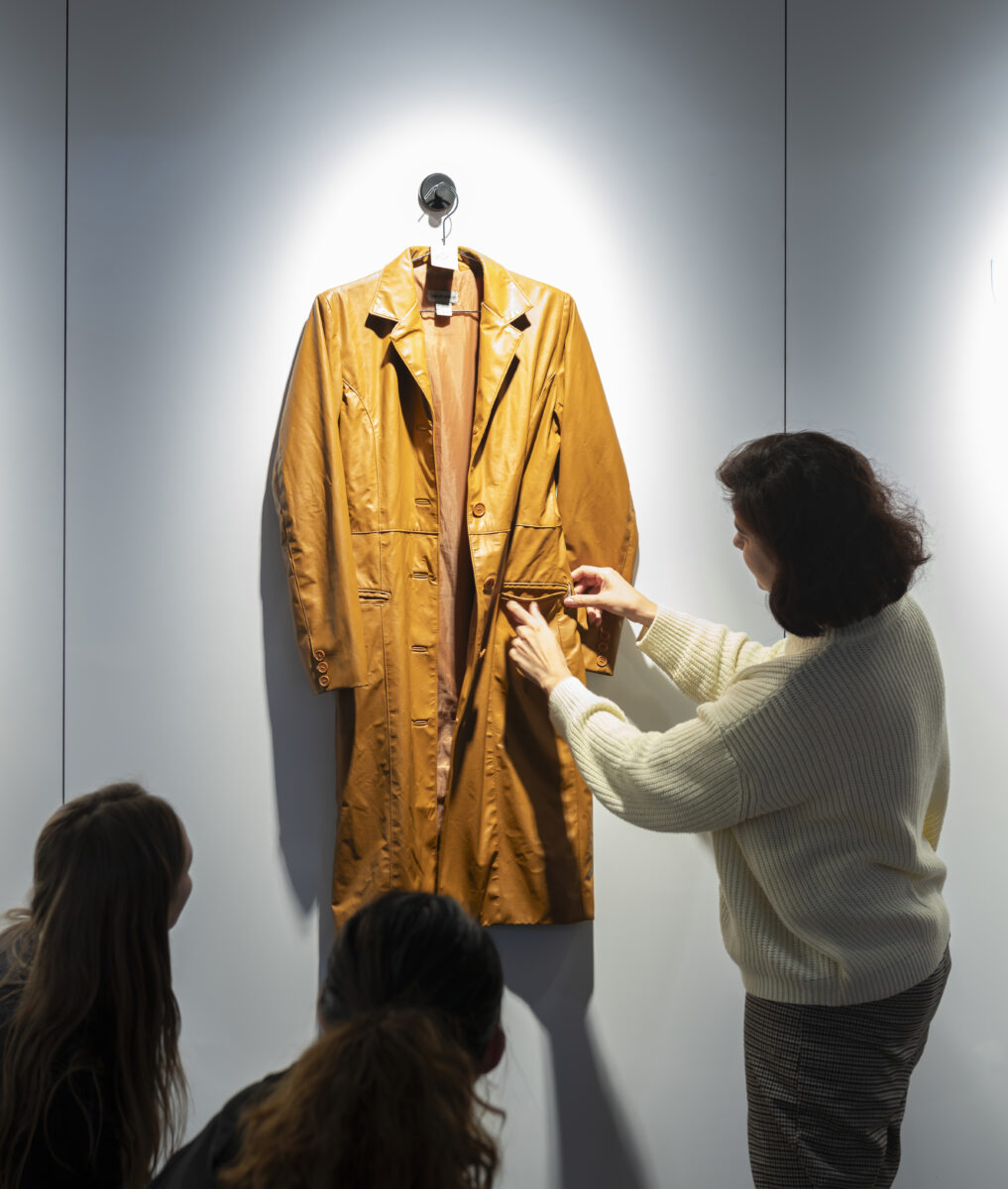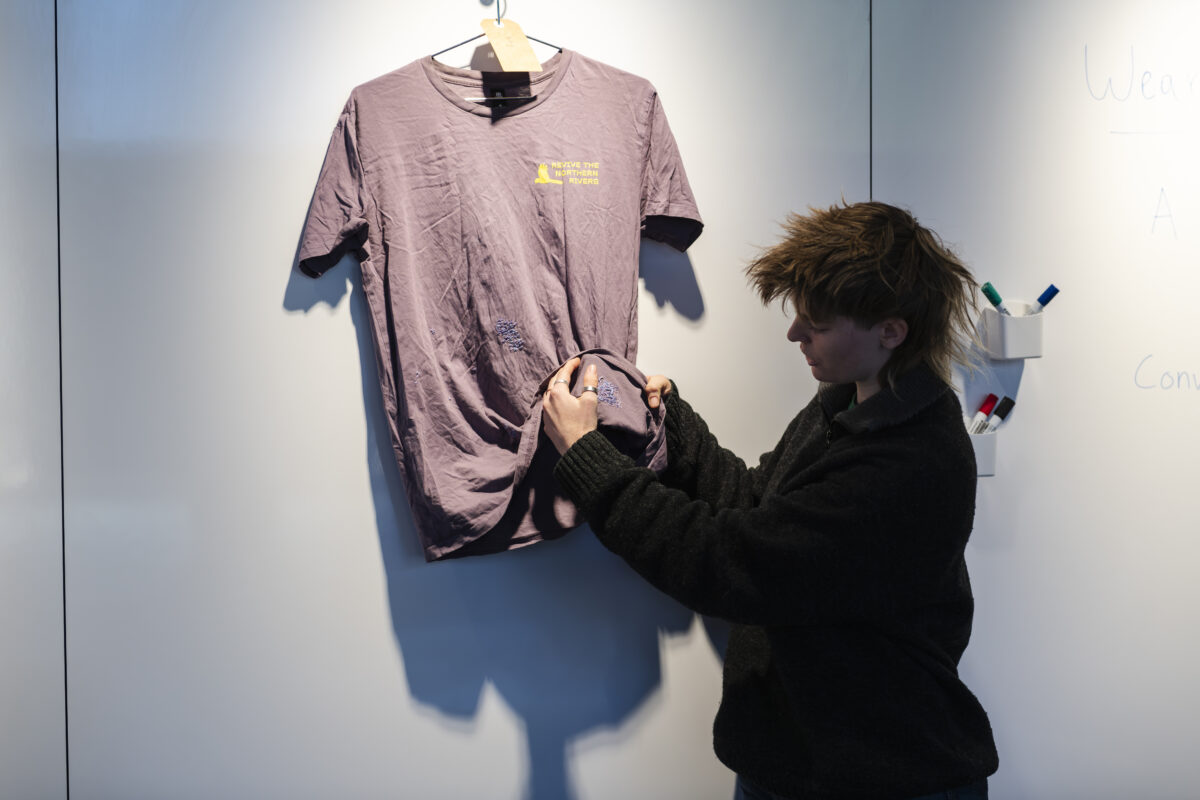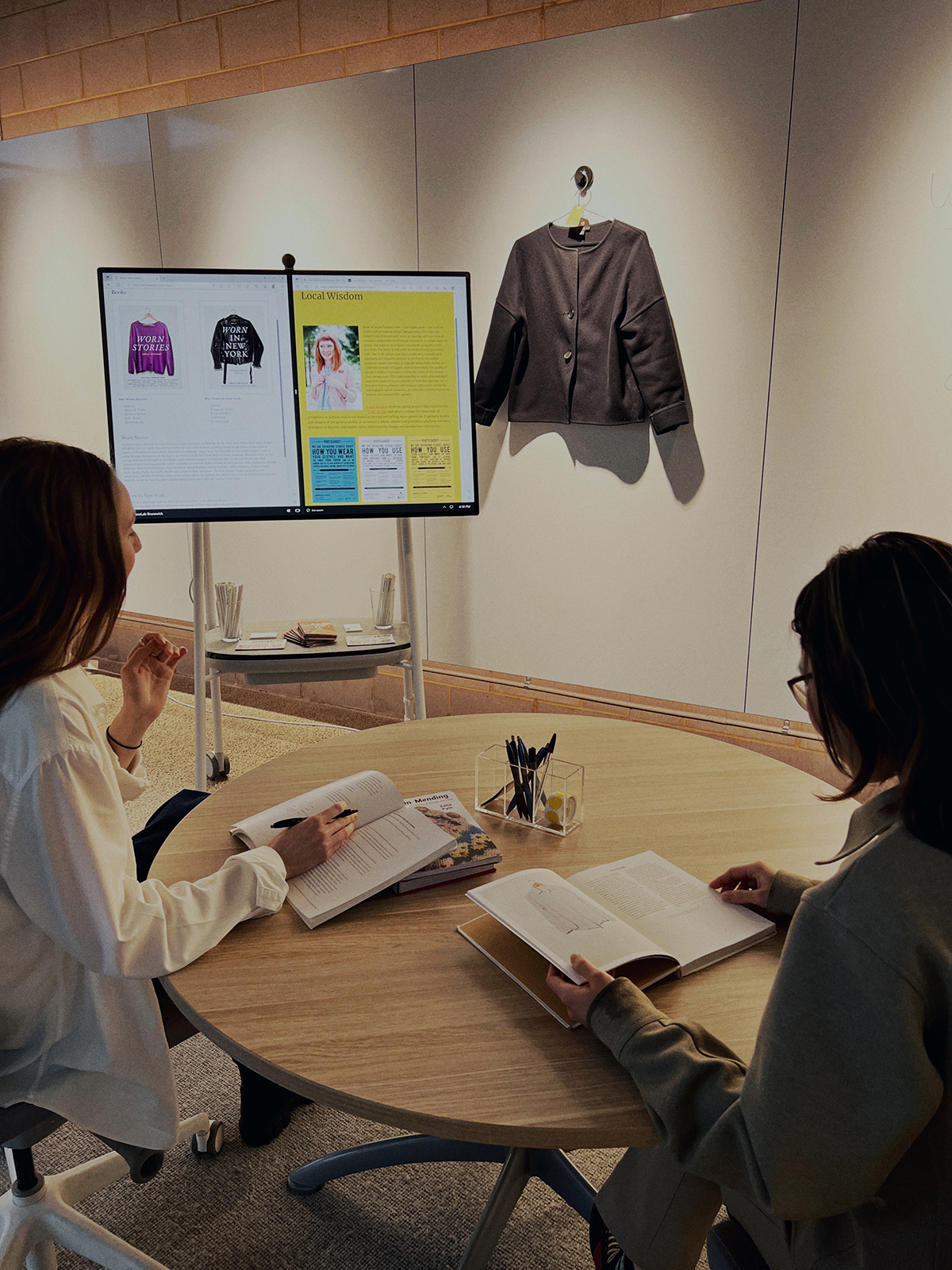
Research Methods: Garment-led, Group Conversations
Over August and September, the RMIT PlaceLab Brunswick team is presenting ‘A Garment’s Life: Conversation Series’ as part of the ‘Wear & Care’ Research Project, underpinned by a carefully considered choice of research method.
One of the key research aims with ‘Wear & Care’ is to gather locals to learn about their practices of mending, repairing and sharing clothing that supports a local community response towards a new fashion system. The research has a particular focus on activities embraced in the home or collaboratively in the community.
As the research considers the changing fashion landscape in Australia and shifting social values in Brunswick, it was critical to establish an environment where lived experiences could be shared naturally and honestly. Therefore, incorporating interviews in the ‘Wear & Care’ methodology was crucial.
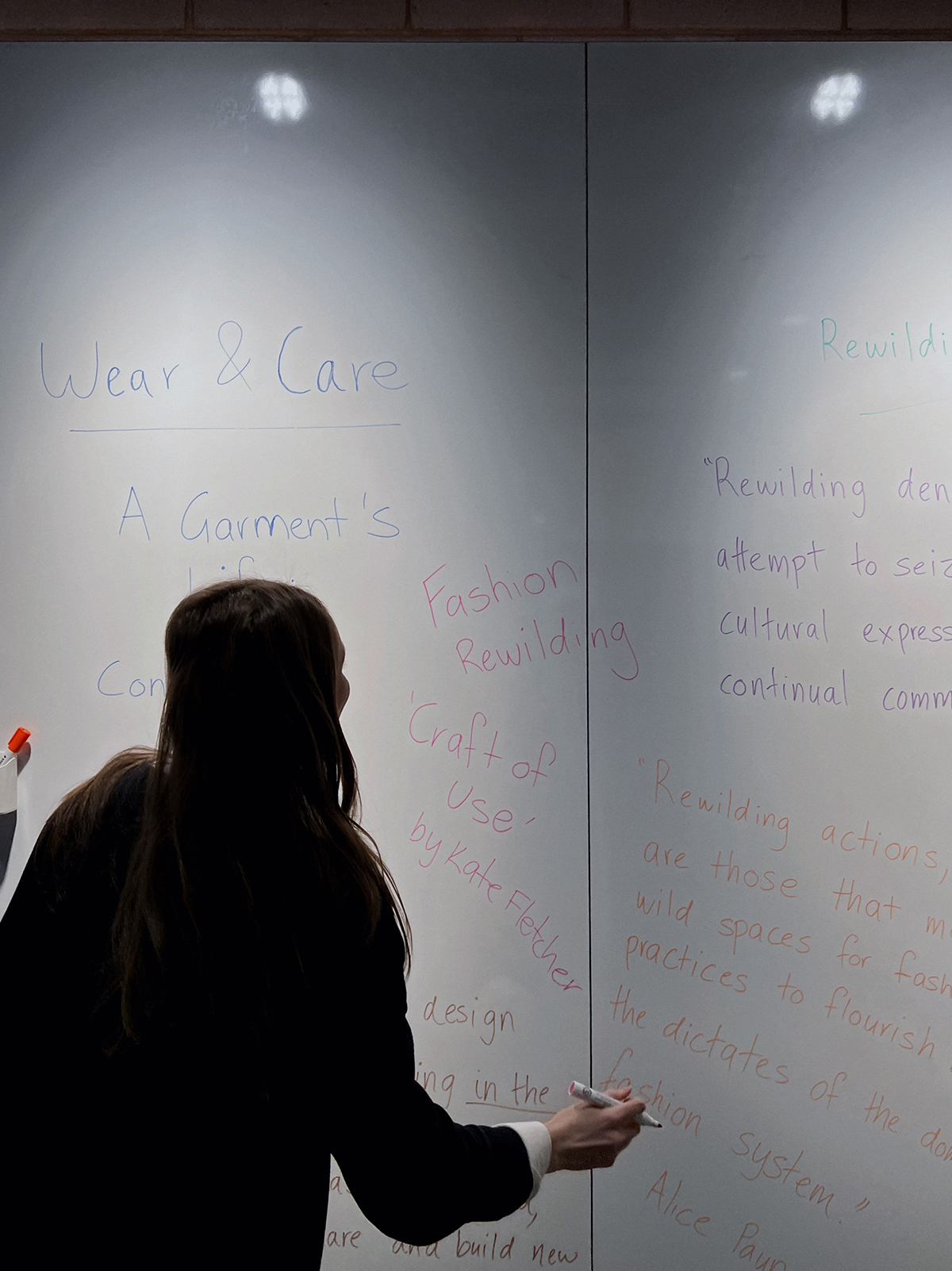
RMIT PlaceLab Brunswick Researcher Hayley Thompson facilitating ‘A Garment’s Life: Conversation Series’. Photo: RMIT PlaceLab.
‘Asking people questions about their lives, opinions, and experiences, and allowing them freedom of expression in telling their stories, is a powerful method of understanding people’s life worlds’ (Brinkmann 2013:149).
With an underlying clothing and fashion-specific focus to the Research Project, ‘Wear & Care’ researcher Hayley referred to existing community projects and research methods for exploring wardrobes, from ‘Worn Stories‘ and ‘On Mending: Stories of damage and repair’ to ‘Craft of Use’ and ‘Local Wisdom‘.
The project and book ‘Craft of Use’ by Kate Fletcher was particularly influential to the method shaped for the Conversation Series. The ‘Craft of Use’ method is a ‘face-to-face interview about how a garment is used and portrait photography of the participant in the piece’ (Fletcher 2017:53). Furthermore, garment-led interview methods included in the book ‘Opening up the Wardrobe: A Methods Book‘, such as those developed by designer and researcher Amy Twigger Holroyd (2017) , also informed the methodology.
Fletcher’s (2017:54) method ‘asks about specific actions and skills in the wardrobe (around the use of garments) — and utilises clothes as a ‘way in’ to talking about these practices that often go unnoticed’.
Beyond a clothing and fashion lens, methods developed by artist-researcher Jody Haines, were also explored as Jody joins ‘A Garment’s Life: Conversation Series’ as a collaborator and series photographer. The methodology Jody explored in her own practice-led PhD research emerges from what she has ‘coined as an Indigenous feminist (new) materialism’ and engages practices of yarning and collaborative portraiture (Haines 2022:44). You can read more about Jody’s practice and Artist-Researcher Residency during PlaceLab Brunswick’s Cycle 01 Research Project ‘Creatives, Communities & Economies’ here.
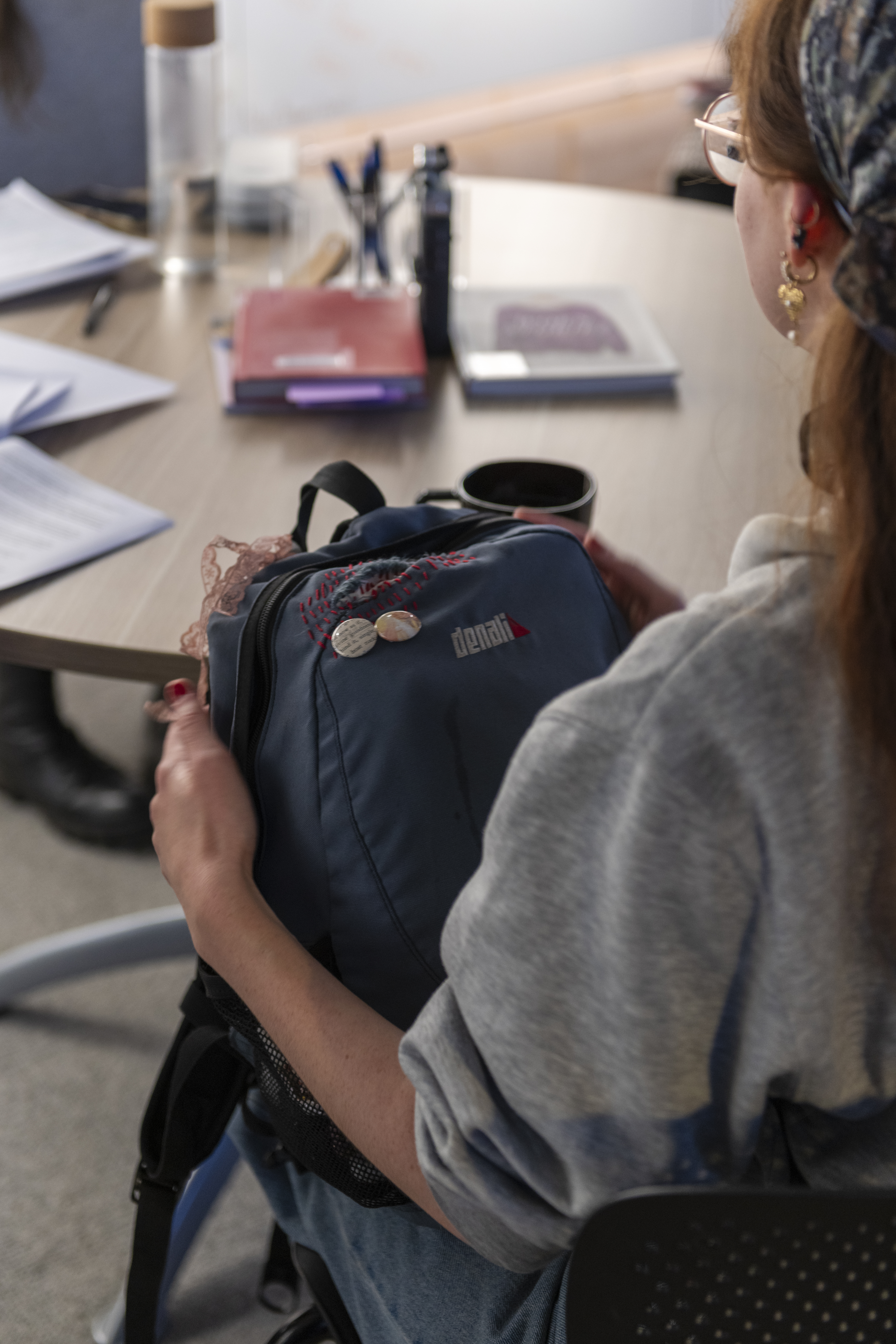
A Community Collaborator at ‘A Garment’s Life: Conversation Series’. Photo: Jody Haines.
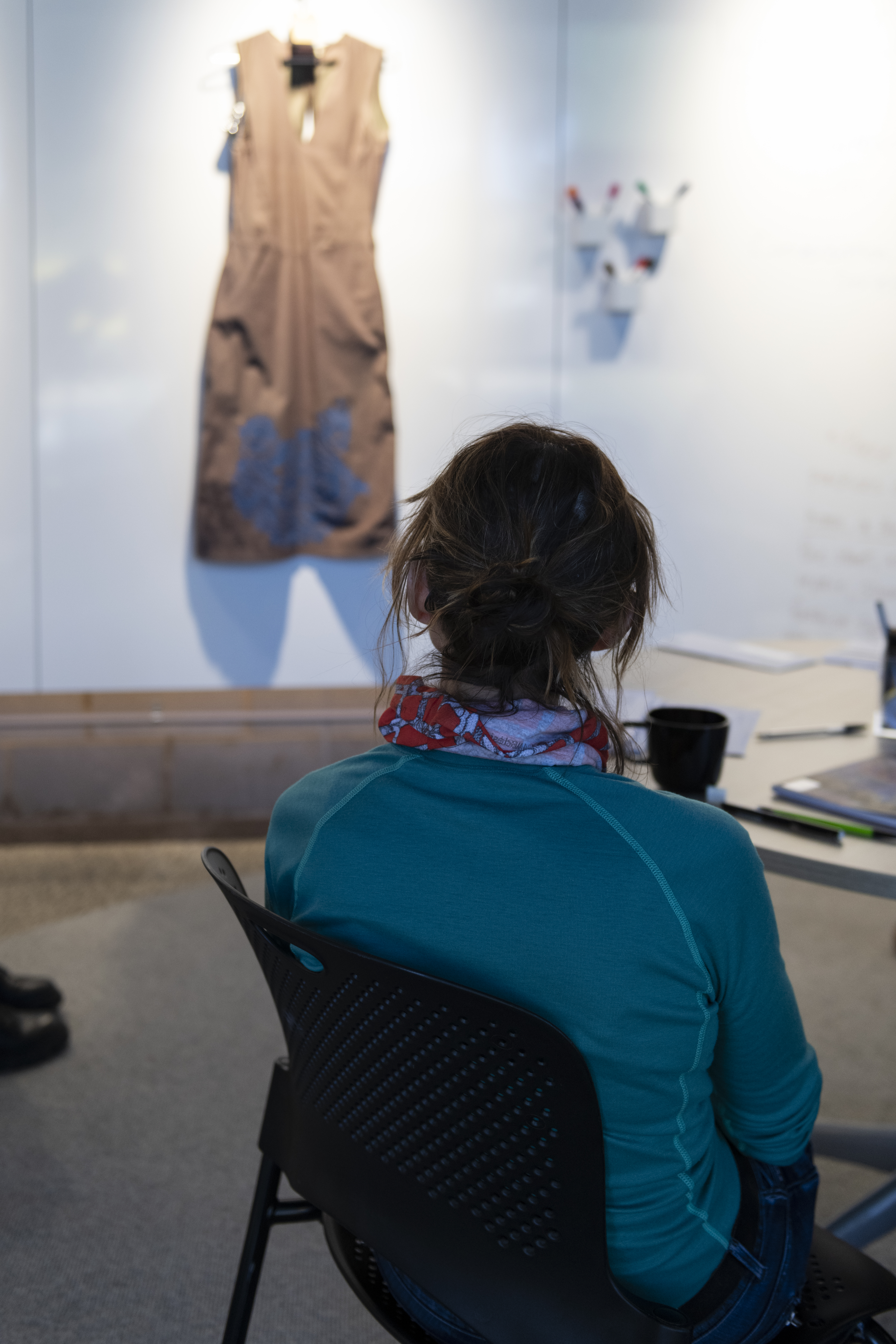
A Community Collaborator at ‘A Garment’s Life: Conversation Series’. Photo: Jody Haines.
The methods investigated ranged from garment-led interviews, face-to-face interviews and group interviews to collaborative portraiture and garment documentation photography. These all helped to shape the approach and experience the team aims to create in the Conversation Series.
From this, the ‘Wear & Care’ team chose a semi-structured, face-to-face, small group conversation approach to interviewing with photo documentation and portraiture elements. Over six sessions, with a maximum of five community collaborators participating in each, three components are central to the approach and intertwine over 90 minutes: storytelling, group conversation and photography.
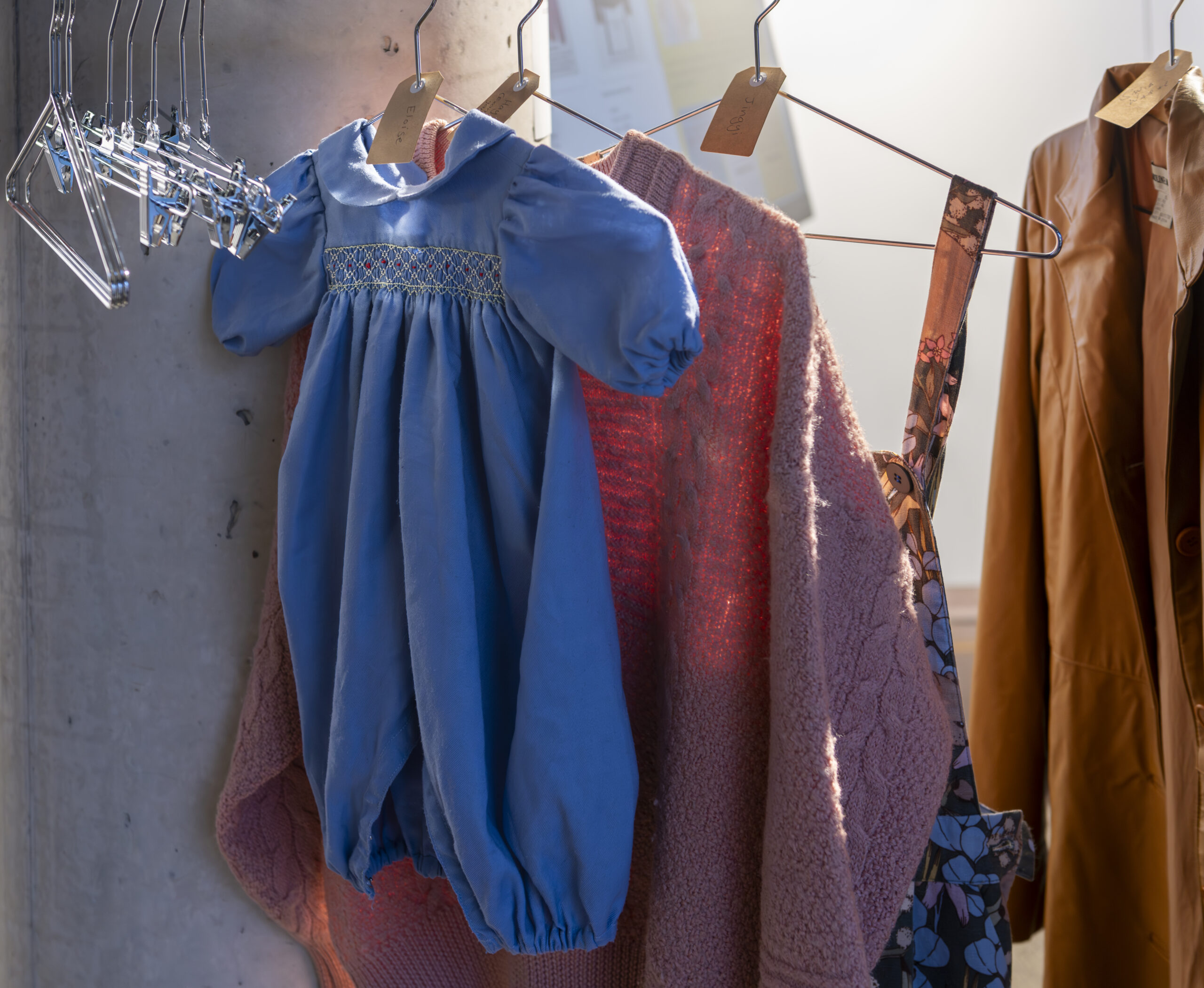
Locals who registered to a session are asked to bring along a garment from their wardrobe that has been mended, repaired or shared. Photo: Jody Haines.
Locals who registered to a session are asked to bring along a garment from their wardrobe that has been mended, repaired or shared (or perhaps a special garment with a story behind it).
They join in a garment-led conversation with a small group of community collaborators, alongside researchers Hayley and Louise as facilitators. While pre-set questions are used as prompts, there is ample space for community collaborators to share their reflections, opinions, or related experiences around clothing, fashion, and sustainability with the group.
As early insights begin to emerge from the first four sessions conducted so far, the method is not only allowing meaningful conversations around daily practices of wearing, repairing and laundering to emerge, but also reflects the deep and complex interconnections surrounding fashion and sustainability with topics including gender, societal values, language and authorship.
The Brunswick team are looking forward to sharing more from ‘A Garment’s Life’ as they wrap up the Conversation Series with two final sessions this week. Stay tuned!
Garment story sharing at ‘A Garment’s Life: Conversation Series’. Photos: Jody Haines.
- Brinkmann S (2013) 'Conversations as research: philosophies of the interview', Counterpoints, 354:149.
- Twigger Holroyd A (2017) 'Method 15. most and least favourite knitwear: Twigger Holroyd, 'garment-led interviews', in Fletcher K and Klepp IG (eds) Opening up the wardrobe: a methods book, Novus Press, Oslo.
- Fletcher K (2017) 'Method 13. practices of garment use: Fletcher, 'craft of use', in Fletcher K and Klepp IG (eds) Opening up the wardrobe: A methods book, Novus Press.
- Haines J (2022) 'A cuppa and a yarn: Exploring methodology', Social Alternatives, 41(2):44-59.
